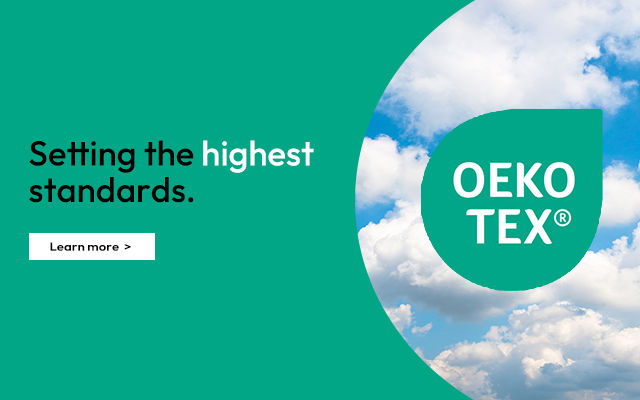Interviews
Bangladesh global apparel export share to go up 1% by 2020
22 Sep '14
4 min read
The HSBC Trade Forecast report expects Bangladesh’s share of textiles and garment exports to rise from 2.8 percent in 2010 to 3.8 percent in 2020
“The strong foothold Bangladesh has in production of apparels will further strengthen growth in total merchandise exports over the coming decade”, a new report from HSBC Bank reveals.
Export value of Bangladeshi ready-made garments rose by 13 percent on the year in the first five months of 2014 after growing by 11.7 percent last year, with US and the EU together importing almost two-thirds.
The trade confidence index of Bangladesh rose from 103 in the second half of 2013 to 141 in first half of 2014, the second highest amongst HSBC’s sample of 23 countries.
Ready-made garments make up around 80 percent of total merchandise exports from Bangladesh, with the value of exports from this sector being greater than exports from India.
In 2013 half of Bangladesh’s exports of garments and textiles went to Europe and a quarter went to the US.
Amongst the 25 economies in the HSBC Trade Forecast, the report expects Bangladesh’s share of textiles and garment exports to rise from 2.8% in 2010 to 3.8% in 2020.
The Eurozone, Bangladesh’s biggest trading partner, is now growing steadily again, albeit very modestly, and global demand is expected to continue to pick up.
Within Asia, trade flows improved modestly in the second quarter and recent data on PMIs and Hong Kong container shipments suggest this improvement is likely to continue.
The report expects Bangladesh to grow rapidly over the remainder of the current decade, and expects investment, particularly in infrastructure, will continue to grow strongly to support this.
Industrial machinery is the second largest import sector behind textiles and this will continue out to 2030 with the sector contributing almost 20 percent of Bangladesh’s import growth.
China, India, Korea and Indonesia will be Bangladesh’s fastest growing import partners, taking advantage of geographical proximity.
“Nonetheless, the US, Germany and the UK are Bangladesh’s top export partners and this will be unchanged till 2030, thanks to strong demand from the West for textiles and garments”, it notes.
Amongst the 25 economies in the Trade Forecast, Bangladesh receives around 20 percent of its imports from China and by 2020 this share will have risen to closer to 30 percent, it says.
The authorities have introduced new safety laws for textile factories to strengthen standards, which has helped to reinforce established relationships with international buyers and in turn should help the industry to expand production.
“The 77% increase in minimum wage for garment workers implemented in December 2013 will add to costs, but the industry is expected to remain competitive in global markets”, the study says.
“The strong foothold Bangladesh has in production of apparels will further strengthen growth in total merchandise exports over the coming decade”, a new report from HSBC Bank reveals.
Export value of Bangladeshi ready-made garments rose by 13 percent on the year in the first five months of 2014 after growing by 11.7 percent last year, with US and the EU together importing almost two-thirds.
The trade confidence index of Bangladesh rose from 103 in the second half of 2013 to 141 in first half of 2014, the second highest amongst HSBC’s sample of 23 countries.
Ready-made garments make up around 80 percent of total merchandise exports from Bangladesh, with the value of exports from this sector being greater than exports from India.
In 2013 half of Bangladesh’s exports of garments and textiles went to Europe and a quarter went to the US.
Amongst the 25 economies in the HSBC Trade Forecast, the report expects Bangladesh’s share of textiles and garment exports to rise from 2.8% in 2010 to 3.8% in 2020.
The Eurozone, Bangladesh’s biggest trading partner, is now growing steadily again, albeit very modestly, and global demand is expected to continue to pick up.
Within Asia, trade flows improved modestly in the second quarter and recent data on PMIs and Hong Kong container shipments suggest this improvement is likely to continue.
The report expects Bangladesh to grow rapidly over the remainder of the current decade, and expects investment, particularly in infrastructure, will continue to grow strongly to support this.
Industrial machinery is the second largest import sector behind textiles and this will continue out to 2030 with the sector contributing almost 20 percent of Bangladesh’s import growth.
China, India, Korea and Indonesia will be Bangladesh’s fastest growing import partners, taking advantage of geographical proximity.
“Nonetheless, the US, Germany and the UK are Bangladesh’s top export partners and this will be unchanged till 2030, thanks to strong demand from the West for textiles and garments”, it notes.
Amongst the 25 economies in the Trade Forecast, Bangladesh receives around 20 percent of its imports from China and by 2020 this share will have risen to closer to 30 percent, it says.
The authorities have introduced new safety laws for textile factories to strengthen standards, which has helped to reinforce established relationships with international buyers and in turn should help the industry to expand production.
“The 77% increase in minimum wage for garment workers implemented in December 2013 will add to costs, but the industry is expected to remain competitive in global markets”, the study says.
Popular News
Leave your Comments
Editor’s Pick
































-Ltd..jpg?tr=w-120,h-60,c-at_max,cm-pad_resize,bg-ffffff)





.jpg?tr=w-120,h-60,c-at_max,cm-pad_resize,bg-ffffff)
.jpg?tr=w-120,h-60,c-at_max,cm-pad_resize,bg-ffffff)






